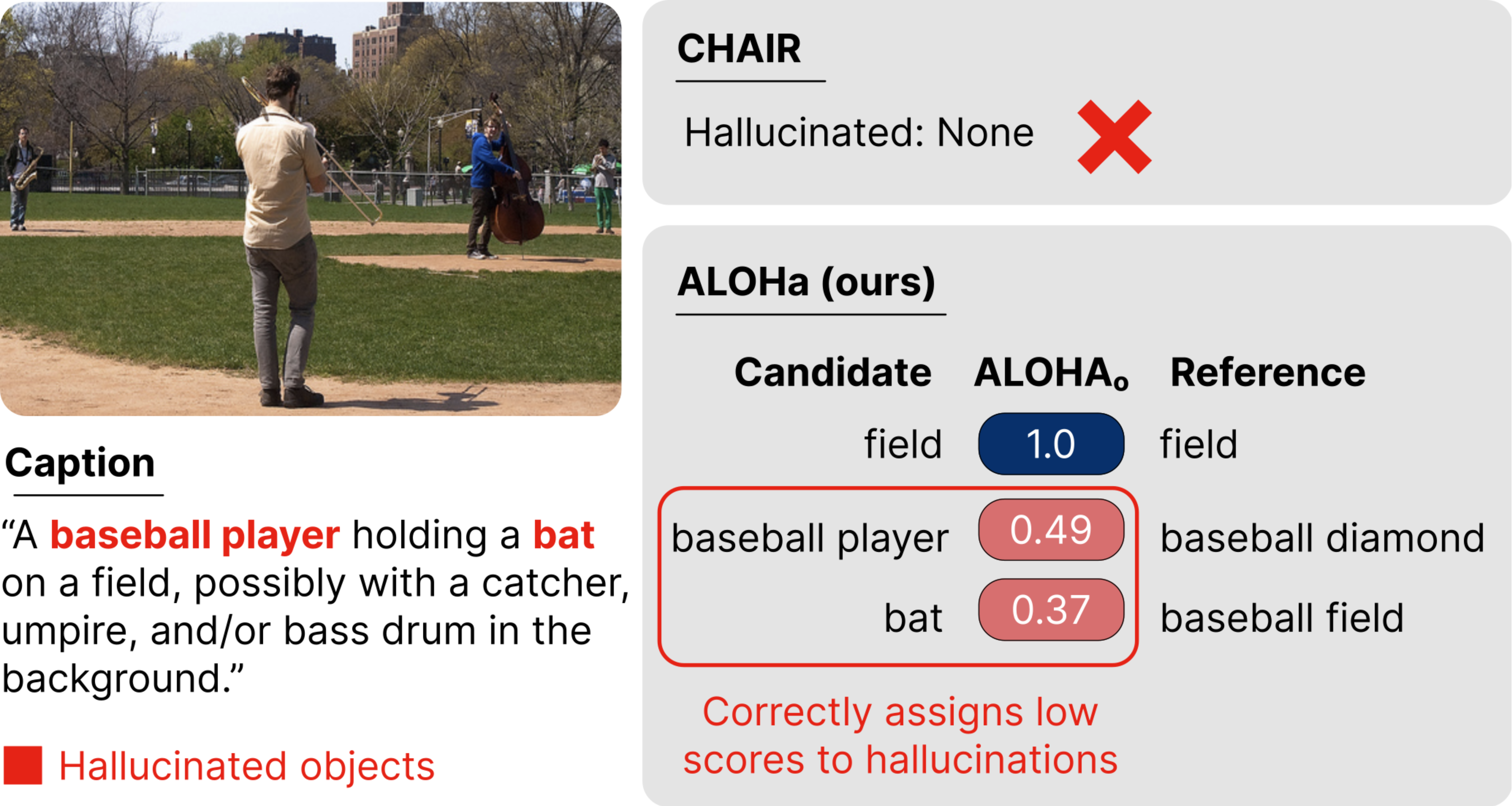
Despite recent advances in multimodal pre-training for visual description, state-of-the-art models still produce captions containing errors, such as hallucinating objects that are not present in a scene. The existing prominent metric for object hallucination, CHAIR, is limited to a fixed set of MS COCO objects and synonyms. In this work, we propose a modernized open-vocabulary metric, ALOHa, which leverages large language models (LLMs) to measure object hallucinations. Specifically, we use an LLM to extract groundable objects from a candidate caption, measure their semantic similarity to reference objects from captions and/or object detections, and use Hungarian matching to produce a final hallucination score. We show that ALOHa correctly identifies 13.6% more hallucinated objects than CHAIR on HAT, a new gold-standard subset of MS COCO Captions annotated for hallucinations, and 30.8% more on nocaps, where objects extend beyond MS COCO categories.